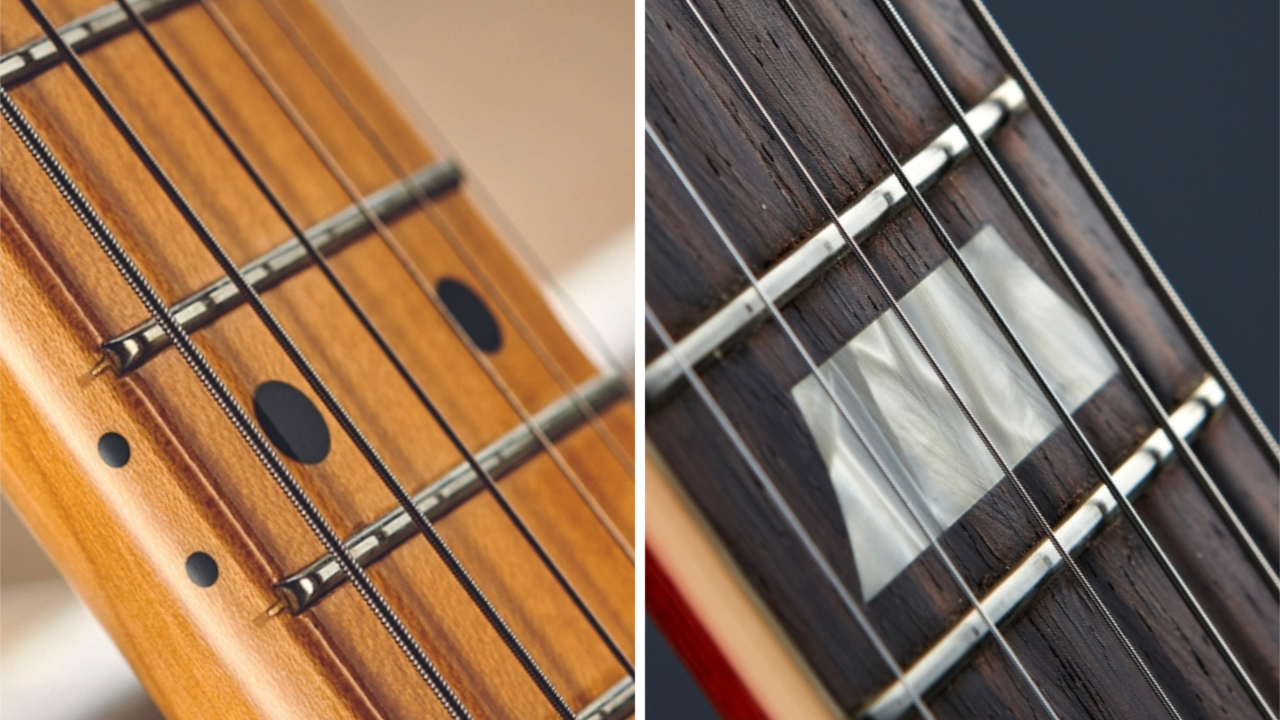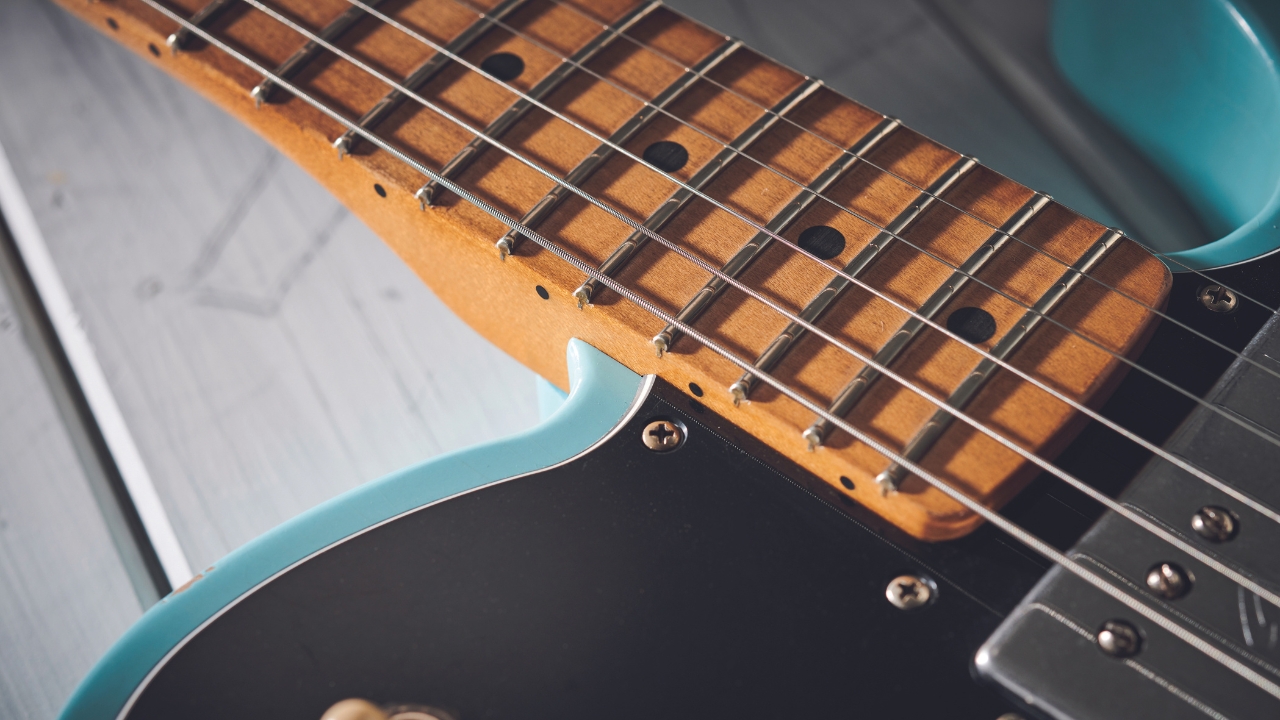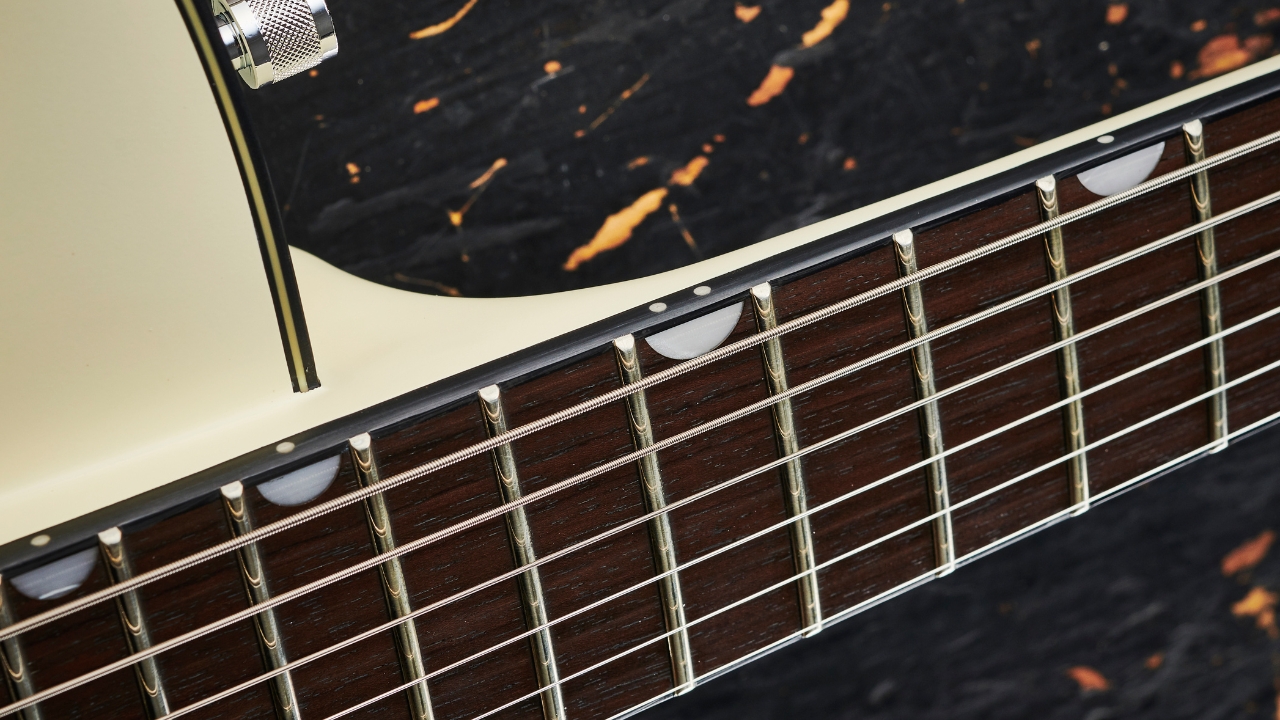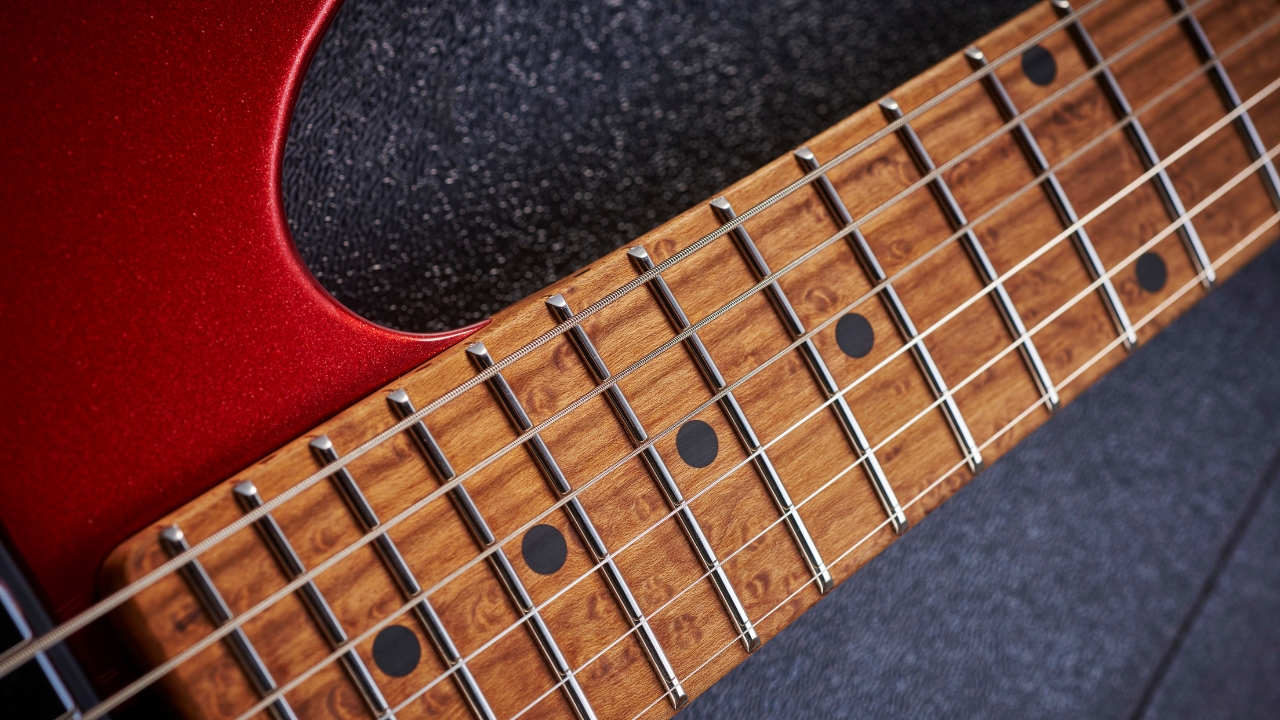Maple vs rosewood fretboards: what’s the difference?
What separates these two standout fretboard woods and which is right for you and your budget?

When considering which fretboard or neck material to go for with your next guitar, or your next mod, there are typically two main candidates: maple or rosewood. Other than their obvious contrast in appearance – maple, anywhere from a light creamy color to a more pronounced yellow or light caramel, whereas rosewood is a darker nutty brown featuring reddish hues, with some grains even verging on black – what else sets them apart?
There are some key differences between the two that play nicely into the tribalistic nature of guitarists, with many claiming one holds particular advantages over the other. And there is plenty of truth in that; each has a distinctive feel and can even impact the sound of your guitar, so read on to find out how picking a fretboard or neck can be more than just an aesthetic choice and why either maple or rosewood may suit you better.
Maple

Whilst not all fretboards come in maple, it is still common for maple to have some part in the construction of your guitar’s neck, often being the go-to choice for the main solid part of the neck itself and then topped with the fretboard of choice. This is because maple has some special qualities that make it perfect for guitar necks, for example it is a really durable wood that copes well in most climates, including particularly hot and humid environments. This is hugely desirable for a guitar neck, which needs to remain straight and strong.
Strength and rigidity is one of maple’s key selling points, as it is harder than many other woods used for guitar manufacturing, including rosewood. This gives it a firmness under the fingers when used on fretboards, which some find optimal for faster playing.
Tone
A maple neck is also characterized by a distinct brightness and snap in the tone it produces. While certain manufacturers tend to avoid maple necks (both fretboard and neck wood) – for example, it is less common to see a Gibson with a maple neck, though there are outliers – they are very common on Fender guitars. If you think of the distinctive sound of many Fenders, 'brightness' and clarity come to mind; the maple neck is most certainly a part of that, as even Fender guitars with rosewood fretboards typically have some maple in their neck, so they retain some of those trademark maple characteristics.
Playability
Though other woods are best left without finish, maple necks can come in either glossy or satin finishes. The preference is down to the player, though glossy finishes do have a reputation for becoming less easy to navigate up and down the fretboard, particularly if you have clammy hands, as they can stick to the gloss finish. Many necks opt for a satin finish, which isn’t as affected by this issue.
If you think of the distinctive sound of many Fenders, 'brightness' and clarity come to mind; the maple neck is most certainly a part of that
In some premium guitars, roasted maple can be used, which makes the neck even less likely to be affected by swelling under humid conditions and can help the guitar stay in tune. But it is not only its moisture-repelling qualities that sets roasted maple apart, it takes on a richer, tan color that adds a certain opulence to the wood. To go one further, flame maple – not named because it has been set on fire, but because of its looks – takes maple necks to a new level of grandeur, providing eye-catching patterns in the wood grain that are often reserved for high-end, luxury guitars.
Get The Pick Newsletter
All the latest guitar news, interviews, lessons, reviews, deals and more, direct to your inbox!
Rosewood

When discussing rosewood necks, it is worth touching on the distinction between neck and fretboard. It’s not that common to have a solid rosewood neck – though they are out there, typically on special edition models from the likes of Fender – and many necks would be made out of either maple or mahogany, with rosewood serving as the fretboard material.
Many brands at the premium end of the market regularly use rosewood necks as they ooze luxury
Some necks are made of multiple pieces of wood that may include a signature stripe of wood down the middle, often known as the skunk stripe. This piece of wood can vary, however rosewood is a regular choice. So despite ‘rosewood necks’ being a common term, generally, that will mean the fingerboards rather than the entire neck.
Many brands that position themselves at the premium end of the market – Gibson and PRS, for example – regularly use rosewood necks as they ooze luxury, particularly when chosen from select reserves, such as the Brazilian rosewood found on the very highest-end PRS signature models. The perceived luxury of rosewood has only increased in recent years, with restrictions on its use being enforced as recently as 2019 due to a concern about the sustainability of the wood, which meant many manufacturers had to state the particular supplier of their rosewood. In many cases mid-range guitars moved to more sustainable woods, such as Pau Ferro, which shares a similar coloring to rosewood, though slightly lighter.
Tone
As with maple, rosewood necks have a characteristic tonal quality of their own, often considered as being slightly warmer and smoother than their maple counterparts. The sound difference may not be the most obvious to external listeners, but combined with the tangible difference in feel, the playing experience can be fairly pronounced.
Playability
Rosewood has an inherent smoothness to its feel, which some players prefer over maple. As a naturally oily wood, rosewood is usually unfinished to retain that trademark smoothness. Despite its natural smoothness, every once in a while it is still worth giving it a light coating of fretboard oil to keep it feeling smooth and factory fresh.
It is not just a light coating of oil that is needed to maintain Rosewood however, as the necks can suffer from warping in extreme conditions of humidity or heat, which is just one reason why solid rosewood necks aren’t as common as solid maple. Warping isn’t a usual phenomenon, however it is something to consider if you live in a particularly humid area. You can combat this by keeping your guitar in its case when not in use.
Conclusion

Whilst one isn’t necessarily better than the other, maple and rosewood have distinctive tonal features that set them apart from each other and a unique feel that will be more preferable to different players.
There is a certain ethical obligation, particularly for large profile manufacturers, to make an effort to be as sustainable with their woods as possible, and in recent times that has been made more challenging with restrictions on rosewood use. Maple on the other hand is a fairly accessible wood, which makes it more suitable to use regularly, which is why it is often used for construction on many necks and even bodies of guitars.
If you’re particularly worried about where the wood for your guitar's neck has come from, manufacturers sometimes provide this information. And if you want to try something totally different, other neck woods are available, be that ebony, pau ferro, laurel, or many other options.
Alternatively, synthetic composites such as Richlite are beginning to feature more frequently on guitars. However, years of trial and error have led to maple and rosewood being standout choices for guitar necks, and that’s because of their great qualities, from resonance, to feel, to durability.
The reason that both maple and rosewood necks continue to be the premier choices for guitar necks is because they do their job so well. Many players choose to have Fender or Gibson guitars because of their unique tones, which they’d probably attribute to pickups and other areas of the guitar construction, but the neck certainly plays a crucial part too. So when you’re next looking for a guitar, maybe take a bit longer when thinking about what neck wood will suit you best.
Connor is a contributor to Guitar World and MusicRadar. Having been a guitarist since the age of 10, he's played bass and guitar in bands across the South West of England. He has a background in audio engineering, having worked in some of the UK’s best studios including Rockfield and Invada, and has a passion for recording guitar. He is always keen to discover the greatest gear for capturing tone, be that microphones, audio interfaces or cab simulators.
“I met Joe when he was 12. He picked up a vintage guitar in one store and they told him to leave. But someone said, ‘This guy called Norm will let you play his stuff’”: The unlikely rise of Norman’s Rare Guitars and the birth of the vintage guitar market
“This would make for the perfect first guitar for any style of player whether they’re trying to imitate John Mayer or John Petrucci”: Mooer MSC10 Pro review




![John Mayer and Bob Weir [left] of Dead & Company photographed against a grey background. Mayer wears a blue overshirt and has his signature Silver Sky on his shoulder. Weir wears grey and a bolo tie.](https://cdn.mos.cms.futurecdn.net/C6niSAybzVCHoYcpJ8ZZgE.jpg)

![A black-and-white action shot of Sergeant Thunderhoof perform live: [from left] Mark Sayer, Dan Flitcroft, Jim Camp and Josh Gallop](https://cdn.mos.cms.futurecdn.net/am3UhJbsxAE239XRRZ8zC8.jpg)




